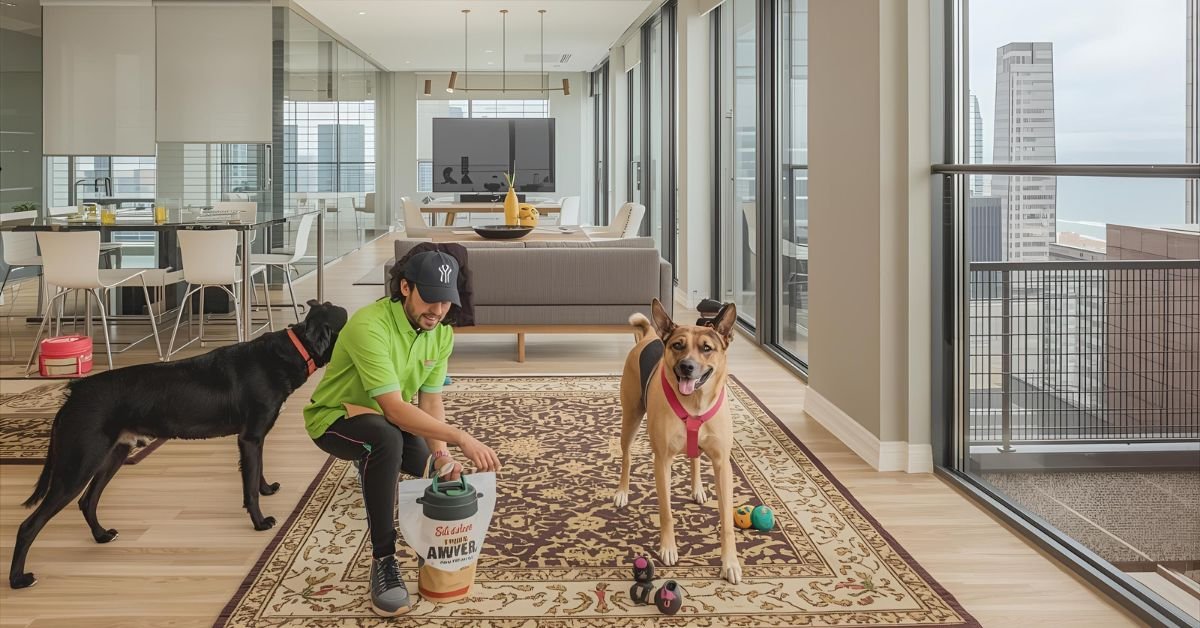
Keeping your dog healthy, happy, and well-behaved goes beyond providing food and love. Dog exercise is a crucial part of a pet’s physical and mental well-being. But many dog owners struggle with knowing how much exercise their pet needs, what types of activities are best, and how to keep them entertained indoors. This guide will cover everything from daily routines to indoor exercises and breed-specific requirements, ensuring your dog thrives.
Dogs of all ages and kinds need to exercise. Frequent exercise promotes cardiovascular health, strengthens bones and muscles, lowers behavioral issues, and helps maintain a healthy weight problems like chewing, digging, or excessive barking. Beyond physical health, dog exercise also boosts mental stimulation. Dogs that are not mentally or physically challenged can become bored, anxious, or even depressed.
Understanding what do dogs need in terms of movement and play is the first step in creating a balanced routine. Exercise doesn’t just mean running around in the yard; it can also include indoor play for dogs, structured walks, games, or even mental challenges like puzzle toys.
If you’re struggling with obedience or behavioral issues, consider enrolling your pup in dog training Sydney programs for expert guidance.

Among the most often asked questions by dog owners is, “how much exercise per day does my dog require?” The answer varies depending on breed, age, and energy level.
Specifically, pet owners often ask, “how much exercise does a golden retriever need?” Golden Retrievers are clever and incredibly active dogs. They generally require at least one to two hours of exercise per day, including walks, swimming, fetch, or agility exercises to stay healthy and mentally engaged.
Consistency is key. Dogs thrive on routines, and scheduling daily dog exercise ensures they remain physically fit and emotionally balanced. However, the type of activity matters as much as the duration. It’s important to combine both physical and mental challenges for optimal health.
Dog exercise doesn’t always mean running in the park. Here are several ways to keep your dog active:
Outdoor activities are ideal for physical health and socialization. Options include:
For outdoor exercises, always ensure your dog is hydrated and protected from extreme weather. High-energy breeds need more frequent and intensive sessions, while older dogs may benefit from gentler walks or low-impact activities.
Sometimes outdoor activity isn’t possible due to weather, space limitations, or personal schedules. That’s where indoor exercises and dog play indoor come into play. Indoor activities can keep your dog stimulated, avoid boredom and improve your relationship with your pet.
Ideas for indoor play for dogs include:
Indoor exercises are particularly important for breeds that need more attention or when your dog is young, old, or recovering from injuries. Even a 10–15 minute indoor play session can help meet daily exercise requirements.
Exercise isn’t only physical. Mental engagement is a critical component of dog exercise, especially for intelligent breeds. Puzzle toys, obedience training, scent work, and learning new tricks all count as valid forms of activity. Combining physical and mental exercises ensures a comprehensive schedule that maintains your dog’s happiness and well-being.
Every dog is unique, and exercise routines should reflect individual needs. Here’s how to approach it:
By understanding what do dogs need, you can create a personalized exercise schedule that benefits both your dog’s body and mind.
Using the right training collars dogs can make obedience sessions more effective and stress-free for both you and your pet.
By combining structured walks, indoor play for dogs, and interactive mental games, you can ensure your pet gets the right balance of activity each day.

Even if you have limited space, there are plenty of ways to keep your dog active indoors:
Indoor play is particularly valuable for rainy days or when you cannot take your dog outside. Even a few minutes of dog play indoor each day contributes significantly to their overall fitness and happiness.
Regular dog exercise is fundamental for a healthy, happy, and well-behaved pet. By understanding your dog’s breed, age, and energy level, you can tailor how much exercise per day they need and mix outdoor activities with indoor exercises. Whether it’s a walk in the park, a game of fetch, or stimulating indoor play for dogs, keeping your dog active will improve both physical and mental health.
Remember, every dog is unique, so observe their energy levels, adjust activities accordingly, and make exercise a fun and rewarding part of their daily routine. Consistent, engaging activity is the key to a happier, healthier pup.
The amount of daily exercise depends on your dog’s breed, age, and energy level. Small breeds may need 20–30 minutes, medium breeds 30–60 minutes, and high-energy or large breeds like Golden Retrievers may require 60–120 minutes of activity every day.
Golden Retrievers are energetic and intelligent dogs that generally need at least 1–2 hours of exercise daily, including walks, play sessions, swimming, or agility training to stay healthy and mentally stimulated.
Dogs require a combination of physical activity and mental stimulation. This can include outdoor walks, indoor play, training sessions, puzzle toys, and games that encourage problem-solving and social interaction.
Yes! Indoor exercises like tug-of-war, hide-and-seek, treat scavenger hunts, interactive toys, and short obstacle courses can provide both physical and mental stimulation, especially when outdoor activity is limited.
During rain or extreme temperatures, focus on indoor play for dogs. Use games like fetch in hallways, puzzle toys, or short training sessions to help your dog burn energy safely indoors.
© 2025 All Rights Reserved.
Get notified about new Seminars, Coupons and Discounts.